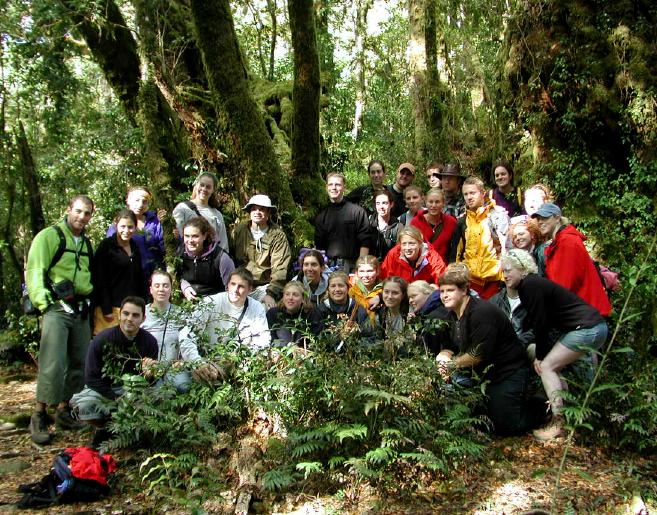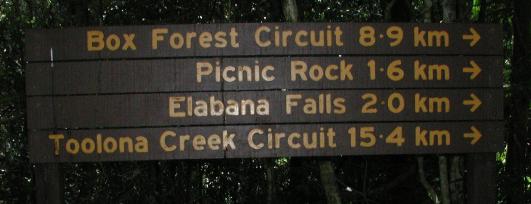 Are we there yet?
Are we there yet?
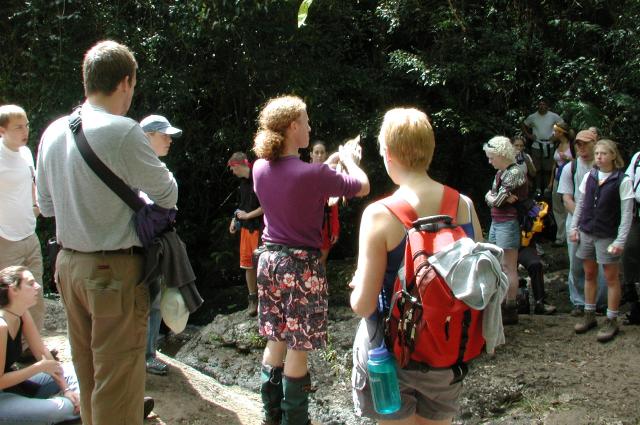 At Picnic Rock and time for a quick discussion of the circumstances leading
to the current forest vegetation along the first part of the hike.
At Picnic Rock and time for a quick discussion of the circumstances leading
to the current forest vegetation along the first part of the hike.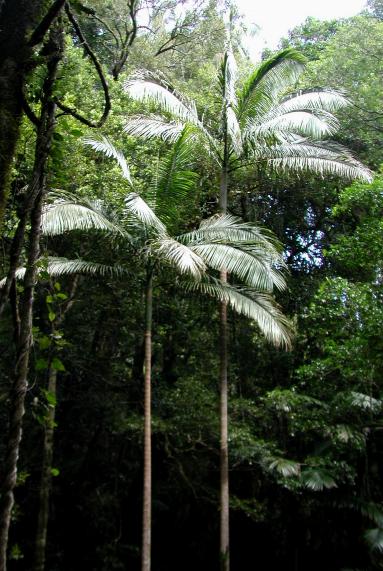
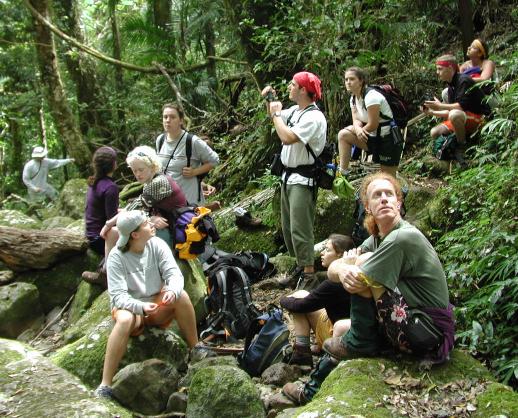
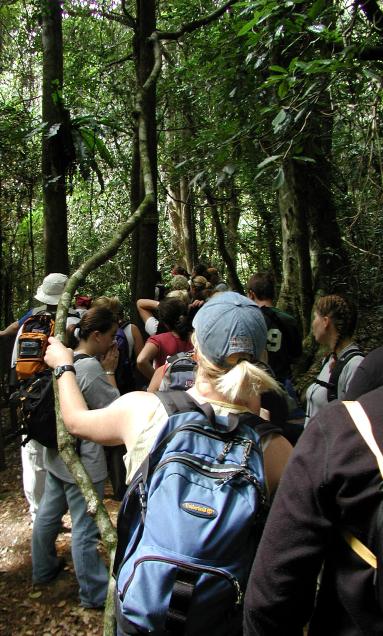

LAMINGTON NATIONAL PARK DAY 4: Most of the day was spent on an 18.5 km hike along Toolona Creek returning along the Main Border Track.
Above: Packing lunch for the trek.
Left: At the start of the hike.
 Are we there yet?
Are we there yet?
 At Picnic Rock and time for a quick discussion of the circumstances leading
to the current forest vegetation along the first part of the hike.
At Picnic Rock and time for a quick discussion of the circumstances leading
to the current forest vegetation along the first part of the hike.


Above: Rest stop along the creek.
Archonophoenix cunninghamiana, "Piccabeen palm"
Family: PalmaeGeographic Range: Rainforests of East Central Australian Coast from New South Whales up to the York Peninnsula. Height: 25-30 meters Diameter: Trunk may reach 30 cm.
Increased moisture (and lack of fire)
along the creek permits these palms to grow here.

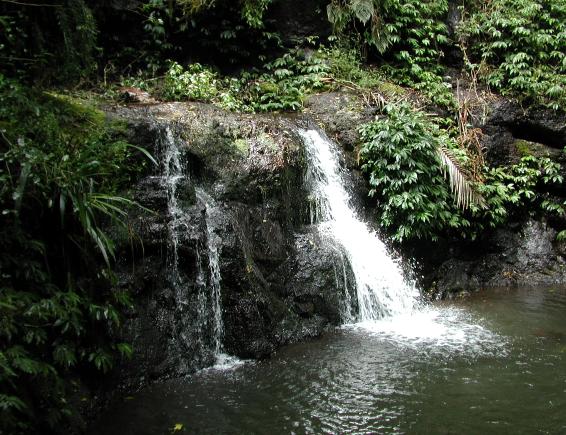
Some of the many cascades along Toolona Creek.
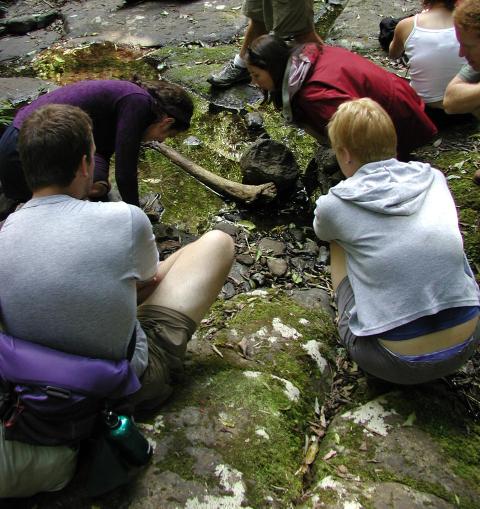
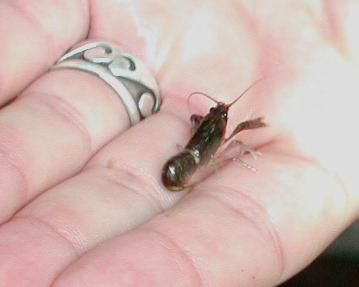
Left: Searching for crayfish in one of the pools along Toolona Creek.
Euastacus sulcatus, "Lamington Blue Spiny Crayfish"
Phylum: Arthropoda Subphylum: Crustacea Class: MalacostracaThe Lamington Blue Spiny Crayfish can be seen in rock pools and at the base of waterfalls and on walking trails in the summer. Reportedly, when confronted by hikers along paths, a larger crayfish will rear up and hisses while moving backwards.
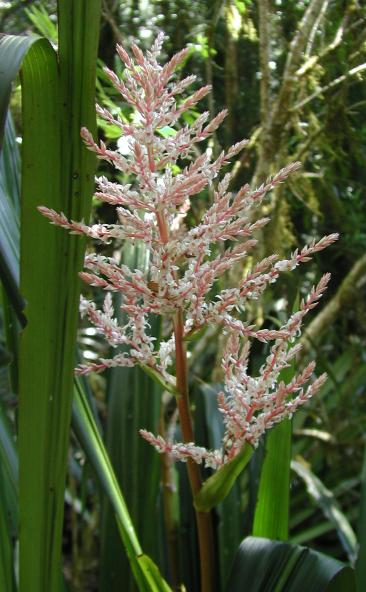
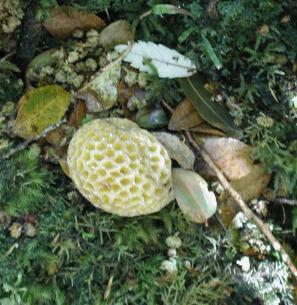
Flowers and fungus along the track.
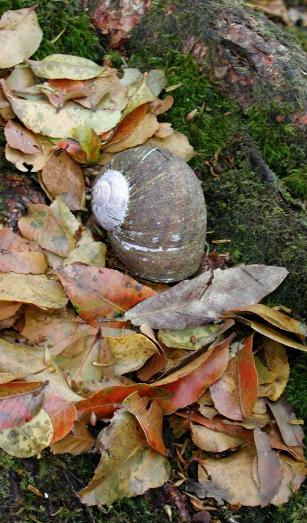
Above: Conversation at Wanungra Lookout on the Main Border Track. From here, Byron Bay is visible in the distance.
Hedleyella falconeri
Phylum: MolluscaDiameter to 70 mm. A large land snail typically found under logs in rainforest habitats.
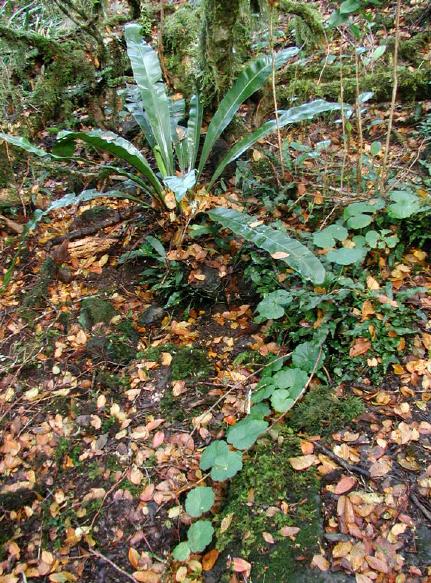
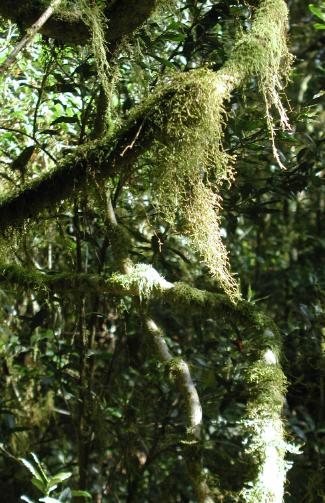
Crow's nest fern, vine, and mosses in the Antartic Beech Forest along the Main Border Track.
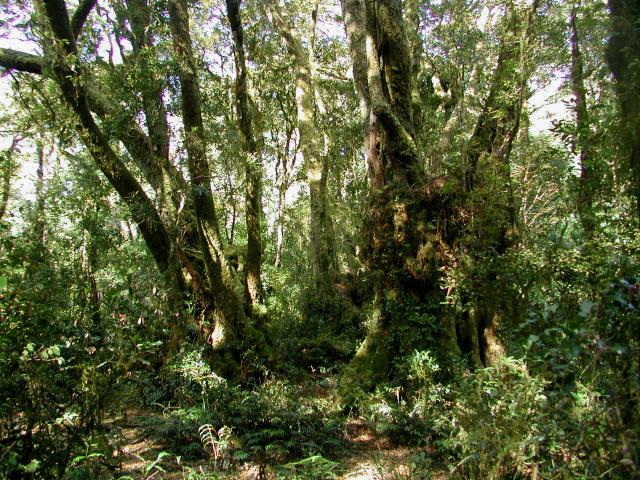 The highlight of the hike was seeing the majestic
Antarctic beech Nothofagus moorei forest.
Lectures in Brisbane highlighted Australia's distant Gondwanan origins and
its more recent geographic isolation and what this has meant for the
evolution of plants and animals on the continent. These
trees occur in the park on isolated hilltops in moister, cooler locations.
These trees are likely growing from root systems more than 1000 years old. They
no longer sprout from seedlings in this area, and only coppice from existing trees.
The highlight of the hike was seeing the majestic
Antarctic beech Nothofagus moorei forest.
Lectures in Brisbane highlighted Australia's distant Gondwanan origins and
its more recent geographic isolation and what this has meant for the
evolution of plants and animals on the continent. These
trees occur in the park on isolated hilltops in moister, cooler locations.
These trees are likely growing from root systems more than 1000 years old. They
no longer sprout from seedlings in this area, and only coppice from existing trees.
